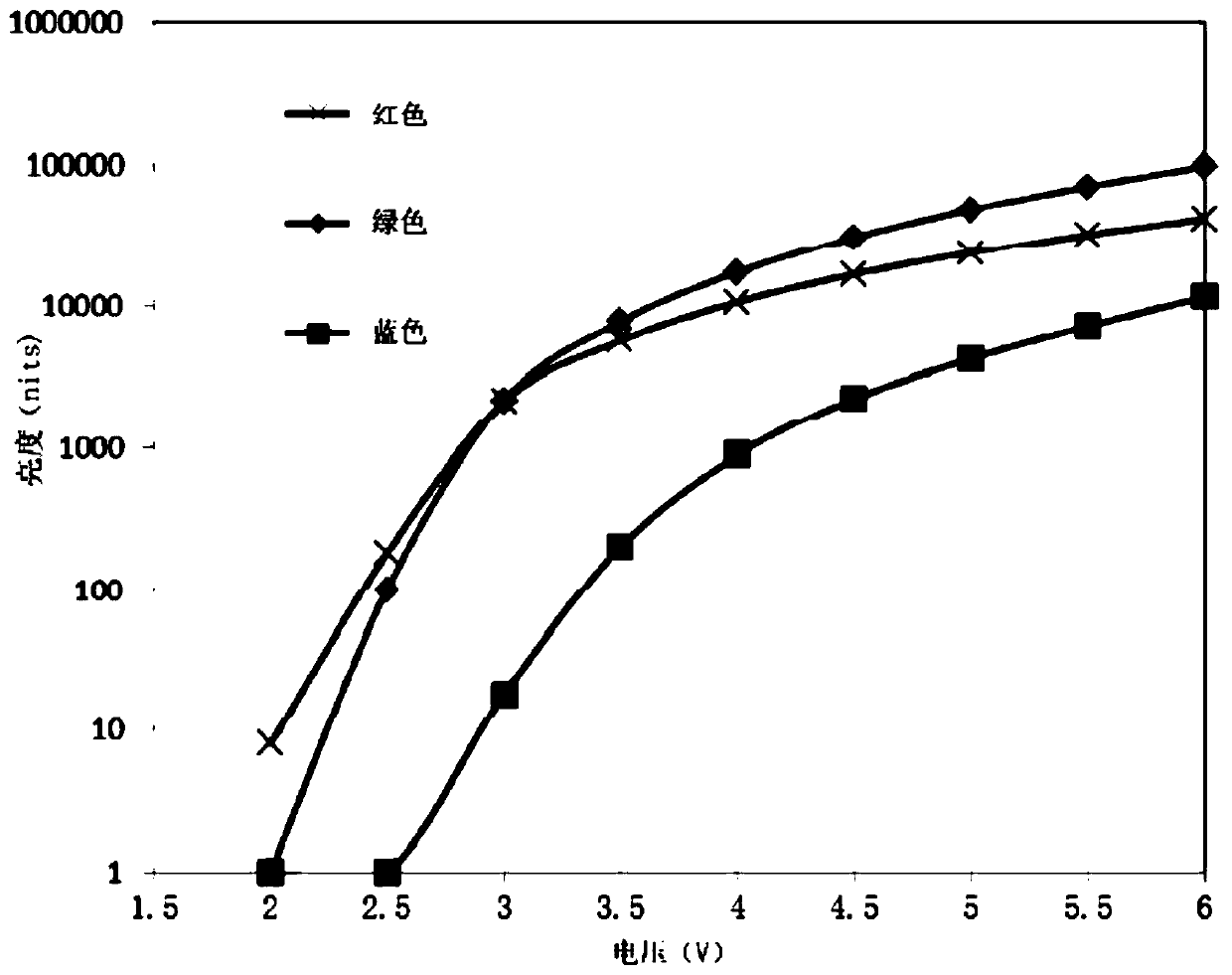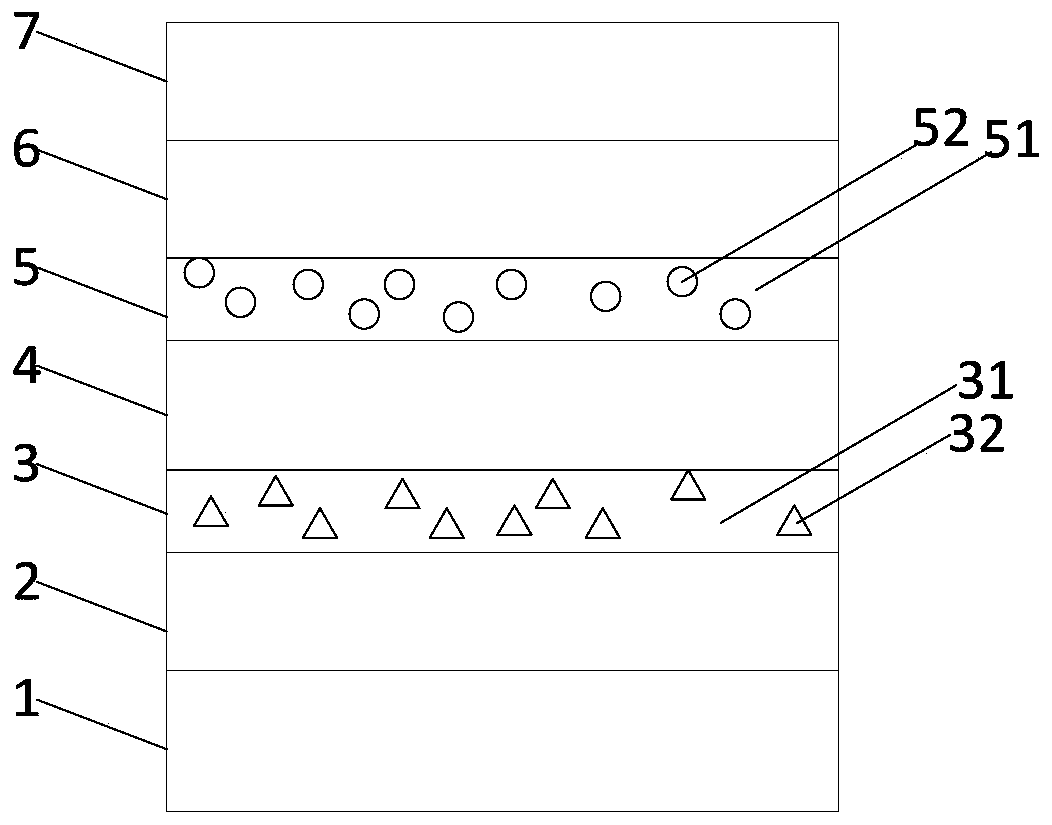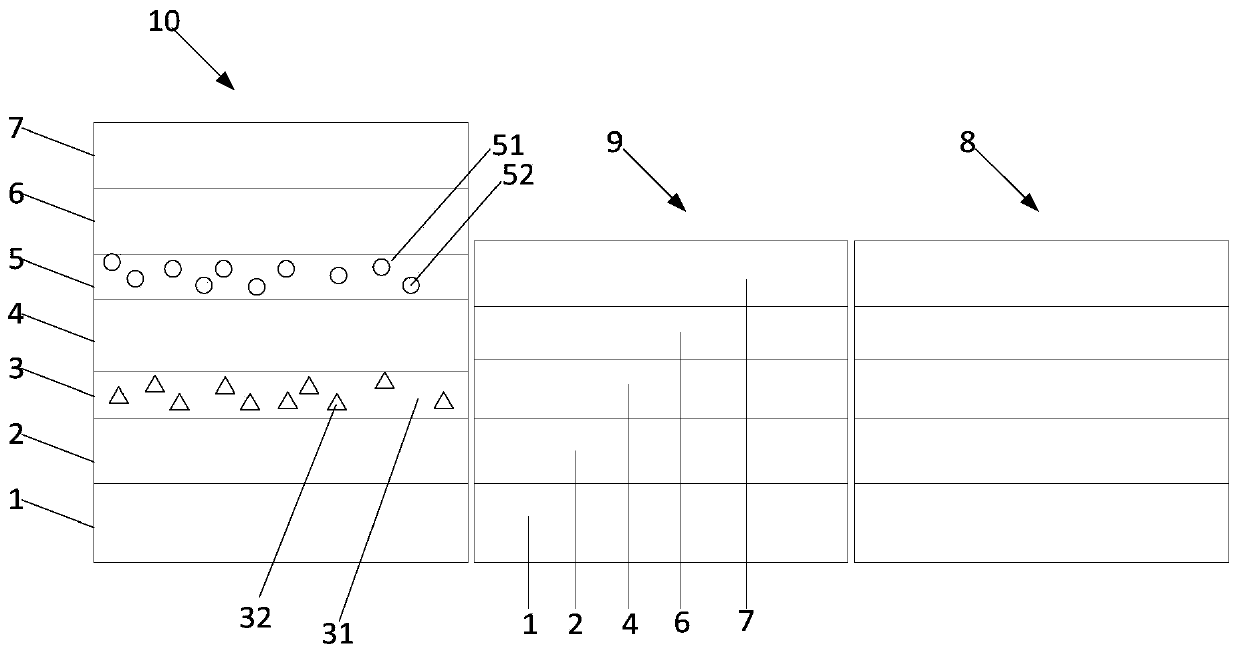Organic electroluminescent device and organic electroluminescent apparatus
An electroluminescent device and luminescence technology, which is applied in the direction of electric solid-state devices, electrical components, semiconductor devices, etc., can solve the problems of color shift, low luminous brightness of red photon sub-pixels and green photon sub-pixels, so as to improve mobility and improve luminescence Efficiency, the effect of reducing the turn-on voltage
- Summary
- Abstract
- Description
- Claims
- Application Information
AI Technical Summary
Problems solved by technology
Method used
Image
Examples
Embodiment 1
[0045] An embodiment of the present invention provides an organic electroluminescent device, such as figure 1 As shown, it includes a first electrode layer 1 , a first carrier functional layer 2 , a light emitting layer 4 and a second electrode layer 7 which are stacked. The first electrode layer 1 is an anode, and the second electrode layer 7 is a cathode, or the first electrode layer 1 is a cathode, and the second electrode layer 7 is an anode. Hereinafter, the first electrode layer 1 is used as an anode, and the second electrode layer 7 is used as a cathode as an example for illustration.
[0046] In the prior art, the process of lighting an organic electroluminescent device is to apply a certain driving voltage to the first electrode layer 1 and the second electrode layer 7, so that the carriers are transported across the potential barrier to the light-emitting layer 4, and finally emit light Layer 4 composite emits light. It can be known that the size of the potential b...
Embodiment 2
[0066] An embodiment of the present invention also provides an organic electroluminescent device, including several pixel units distributed in an array, such as image 3 As shown, each pixel unit includes a red light sub-pixel unit 8, a green light sub-pixel unit 9, and a blue light sub-pixel unit 10, and each sub-pixel unit includes a stacked first electrode layer 1, a light emitting layer 4, and a second electrode Layer 7, the light-emitting layer 4 in the red sub-pixel unit 8, the green sub-pixel unit 9 and the blue sub-pixel unit 10 is a red light-emitting layer, a green light-emitting layer and a blue light-emitting layer respectively;
[0067] The blue sub-pixel unit 10 includes the organic electroluminescence device provided in the first embodiment above. The specific content has been described in detail in Embodiment 1, and will not be repeated here.
[0068]Generally, the turn-on voltage of the blue sub-pixel unit 10 is greater than the turn-on voltage of the red sub...
Embodiment 3
[0072] The embodiment of the present invention provides a specific organic electroluminescent device, including several pixel units distributed in an array, and each pixel unit includes a red sub-pixel unit 8 , a green sub-pixel unit 9 and a blue sub-pixel unit 10 .
[0073] Each sub-pixel unit includes a stacked first electrode layer 1 (anode), a first carrier functional layer 2 (electron blocking layer), a light emitting layer 4, a second carrier functional layer 6 (hole blocking layer) ) and the second electrode layer 7 (cathode), the light-emitting layer 4 in the red sub-pixel unit 8, the green sub-pixel unit 9 and the blue sub-pixel unit 10 is a red light-emitting layer, a green light-emitting layer and a blue light-emitting layer respectively.
[0074] Wherein, a P-doped layer 3 is disposed between the electron blocking layer and the blue light emitting layer in the blue light sub-pixel unit 10 . The P-doped layer 3 includes the first base material TPD and the P-dopant N...
PUM
| Property | Measurement | Unit |
|---|---|---|
| thickness | aaaaa | aaaaa |
| thickness | aaaaa | aaaaa |
Abstract
Description
Claims
Application Information
 Login to View More
Login to View More - R&D
- Intellectual Property
- Life Sciences
- Materials
- Tech Scout
- Unparalleled Data Quality
- Higher Quality Content
- 60% Fewer Hallucinations
Browse by: Latest US Patents, China's latest patents, Technical Efficacy Thesaurus, Application Domain, Technology Topic, Popular Technical Reports.
© 2025 PatSnap. All rights reserved.Legal|Privacy policy|Modern Slavery Act Transparency Statement|Sitemap|About US| Contact US: help@patsnap.com



